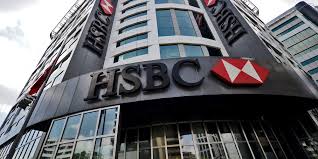January Property Snapshot – Median Values and Growth rates
We are constantly being bombarded by a huge number of often quite contradictory news items and predictions and forecasts from a plethora of experts in economic, property and investment professions. I want to share a few just to highlight how difficult it is to try to put all this information into a context that can help someone to make a more informed investment decision, rather than seeing them paralysed by the lack of any clarity that could otherwise lead them to do nothing for all the wrong reasons. I prefer the clarity of someone like Warren Buffett !
He is known as the Wizard of Omaha and considered to be one of the world’s most successful investors and for thousands of investors around the world, Warren Buffett has become their investment guru.
In January, Warren Buffett again released his highly anticipated annual shareholder newsletter and this time, front and centre of his letter was real estate investment.
Specifically, he reflected on two small properties that he purchased long ago and offered some insights on real estate investment. In his letter, Buffett says he cites the tales to “illustrate certain fundamentals of investing”. He then goes on to highlight his five tips for real estate investing.
They are:
-
-
-
- You don’t need to be an expert in order to achieve satisfactory investment returns. But if you aren’t, you must recognize your limitations and follow a course certain to work reasonably well. Keep things simple and don’t swing for the fences. When promised quick profits, respond with a quick “no.”
- Focus on the future productivity of the asset you are considering. If you don’t feel comfortable making a rough estimate of the asset’s future earnings, just forget it and move on. No one has the ability to evaluate every investment possibility. But omniscience isn’t necessary; you only need to understand the actions you undertake.
- If you instead focus on the prospective price change of a contemplated purchase, you are speculating. There is nothing improper about that. I know, however, that I am unable to speculate successfully, and I am sceptical of those who claim sustained success at doing so. Half of all coin-flippers will win their first toss; none of those winners has an expectation of profit if he continues to play the game. And the fact that a given asset has appreciated in the recent past is never a reason to buy it.
- With my two small investments, I thought only of what the properties would produce and cared not at all about their daily valuations. Games are won by players who focus on the playing field – not by those whose eyes are glued to the scoreboard. If you can enjoy Saturdays and Sundays without looking at stock prices, give it a try on weekdays.
- Forming macro opinions or listening to the macro or market predictions of others is a waste of time. Indeed, it is dangerous because it may blur your vision of the facts that are truly important. (When I hear TV commentators glibly opine on what the market will do next, I am reminded of Mickey Mantle’s scathing comment: “You don’t know how easy this game is until you get into that broadcasting booth.
-
-
As always, I hope you find this interesting reading and that it helps you make better informed decisions.
Best Regards,
Dr Andrew Unterweger
MB BS, CFP®, Dip FP, Dip FNS, MFAA, AFA, SPAA, REA
RATES FORECAST TO FALL TO 2PCBy Smart Property Investor Staff Reporter | 6th February 2015
Domain Group senior economist Andrew Wilson said the Reserve Bank had made the right decision to reduce the cash rate from 2.5 per cent to 2.25 per cent. Dr Wilson also said that another cut is likely, given that the economy received minimal stimulus from the succession of rate cuts between October 2011 and August 2013. “We haven’t had much action from cutting from 4.75 per cent to 2.5 per cent, so I’m not sure what a 0.25 per cent improvement is going to do,” he told Smart Property Investment’s sister publication Real Estate Business. “Certainly the Reserve Bank had to act – it’s really the only tool in the box that we’ve got left.” Pricing gaps across product types and capital cities are wideningby Cameron Kusher 30 January 2015 The cost of Sydney housing relative to other capital cities is widening and the cost of buying a house as opposed to a unit is increasing as a record number of units commence construction. The cost of Sydney housing relative to other capital cities is widening and the cost of buying a house as opposed to a unit is increasing as a record number of units commence construction. According to median selling prices over the three months to December 2014 published in the CoreLogic RP Data Home Value Index report, the gap between capital city house and unit prices has never been greater. As at December 2014, the capital city median house price was almost 20% higher than the capital city median house price. In dollar value terms, median house prices are $100,000 greater than unit prices. read more… |
| Melbourne growth to stand out in 2016: HSBC’s Paul Bloxham JESSIE RICHARDSON | 10 FEBRUARY 2015 Melbourne will see the highest price growth of any capital city next year, HSBC has forecast. In the latest HSBC Australia Downunder Digest report, HSBC Australia chief economist Paul Bloxham forecasts 4% to 8% price growth in Melbourne for 2016, after 7% to 8% growth in 2015. Bloxham expects that in 2015, Melbourne and Sydney will “continue to outpace the rest of the nation”, noting that from its mid-2012 trough, Melbourne’s housing prices have increased by 20%. |
John McGrath ignites Sydney’s “hot forever” inner ring debateby Jonathan Chancellor | 1st Febuary 2015 John McGrath has always been passionate about the property prospects of Sydney’s inner ring suburbs. But last week he went a little further, saying suburbs close to the city are becoming so desirable that they will be “hot forever” But last week he went a little further saying suburbs close to the city are becoming so desirable that they will be “hot forever”. The high profile agent stopped short of declaring inner city property prices were immune from price falls. But the chief executive of McGrath Estate Agents told Fairfax Media these areas would always be attractive to buyers. “There is just no end of demand from overseas and local buyers who want to live in those precincts,” McGrath said. |
Sydney property bubble to pop when rates rise, says HSBCBy James Mitchell | 11th Febuary 2015 A fresh round of cheap credit is further inflating Sydney’s investor-driven property prices.In a research note released yesterday, HSBC economists Paul Bloxham and Daniel Smith predict strong national housing price growth to continue at seven to eight per cent, driven by record-low mortgage rates. “We see Sydney prices rising by 9 to 10 per cent in 2015 and expect that, when rates do eventually rise, there is now a high risk that Sydney will see price falls,” the economists said. “Although we do not see a national housing bubble, we believe that growth in Sydney housing prices is currently running at an unsustainable pace and that any further growth is likely to be met by housing price declines in future years, when interest rates do begin to rise,” they said. A signal of the growing risk of overinflation in the Sydney market is the high level of investor demand, according to HSBC. |
| COMMONWEALTH BANK POSTS 8PC HALF-YEAR PROFIT RISE TO $4.5B By business reporter Michael Janda | 11 Feb 2015 PHOTO: The Commonwealth Bank has posted its half-year results. (ABC News: Nic MacBean, file photo) The Commonwealth Bank has reported an 8 per cent rise in half-year profit to $4.54 billion. The bank’s preferred cash measure of net profit, which adjusts for some accounting items, also rose 8 per cent to $4.62 billion. CBA said its improved profit came on the back of a 5 per cent increase in revenue, despite subdued conditions in the lending market. It also said it had lowered its cost to income ratio by 70 basis points to 42.2 per cent, as productivity initiatives continued to contain business expenses. |
More articles


 Two prominent economists have praised the Reserve Bank of Australia’s decision to reduce the cash rate and have predicted at least one more cut to come.
Two prominent economists have praised the Reserve Bank of Australia’s decision to reduce the cash rate and have predicted at least one more cut to come.








Connect With Us